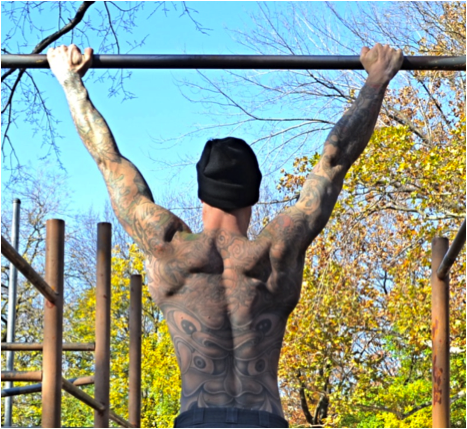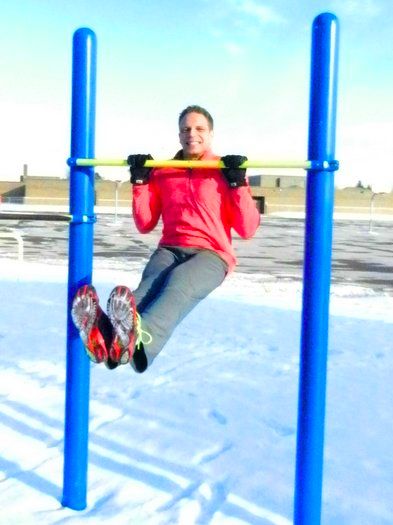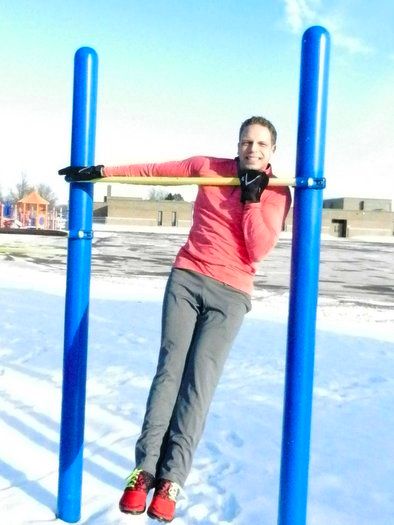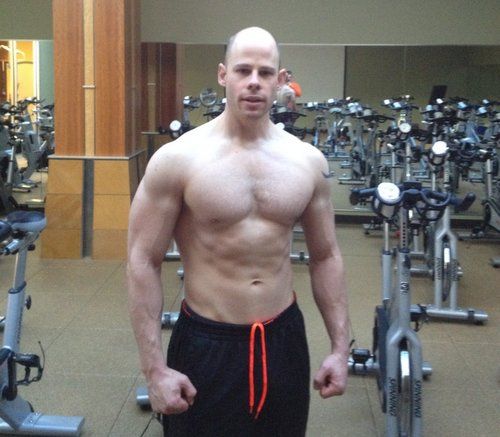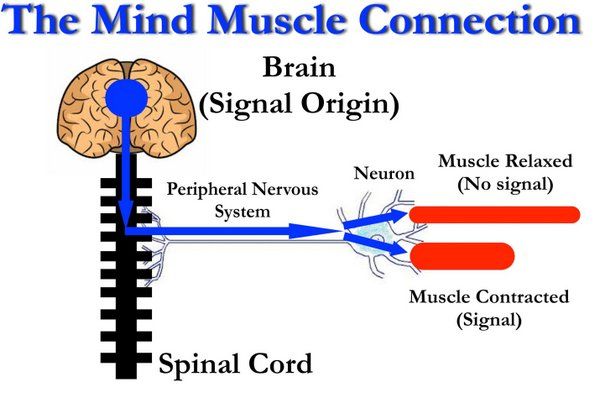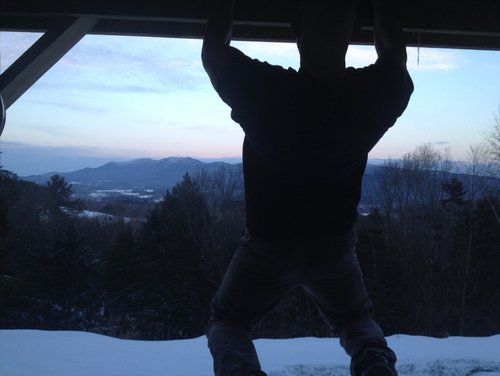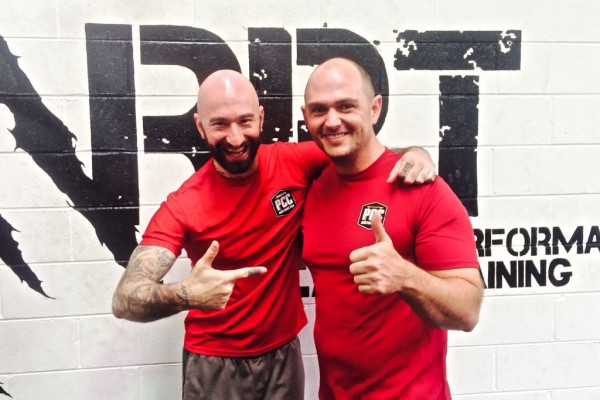 When I signed up for the first ever PCC Australia, I knew I had my work cut out for me. I didn’t find out about the event until fairly late, so I only had 3 weeks to get ready for The Century.
When I signed up for the first ever PCC Australia, I knew I had my work cut out for me. I didn’t find out about the event until fairly late, so I only had 3 weeks to get ready for The Century.
The first time I attempted the test, I completed the 100 reps in 8 minutes and 50 seconds. Not bad. I’ll be able to shave those 50 seconds off in the next three weeks, I thought. I decided to send Andrew Read from Dragon Door Australia an email to make sure I was doing it right. Andrew responded to my email very quickly.
“100 repetitions need to be completed within 8 minutes. Once you start the exercise you cannot stop until the desired reps are completed. You must complete ALL ten chin ups in a row.”
Crap, Crap, Crap. I thought I was able to stop throughout the set.
Three weeks out my max rep chin ups was a whopping eight reps. And that was fresh, with no hanging knee raises before. How the hell am I going to do 10 chin ups AFTER holding onto the bar to do 20 hanging knee raises–especially at the end of three days of attempting all sorts of new and interesting techniques?
I then stumbled across Coach Wade’s article about kicking ass in the Convict Conditioning certification. Ideally you need to do 50% more for each activity prior to the weekend.
How the hell was I going to do that? I decided I was just going to keep doing the Century. I’d stop all other training and simply practice the test.
In the beginning I did the century morning and night for two days straight. What a stupid idea! As a result of me being 105kg (231lbs), I’m way too heavy to jump into that much volume. I was now way too sore and the PCC was getting way too close.
After a couple of days with no training, it was time to rethink the strategy and start again.
My new strategy was to do as much work as I possibly could whilst staying as fresh as I could so I decided to do ladder super-sets. I combined the squats and the push-ups and then the hanging knee raises and the chin ups. I based the ratios on what was coming up in the PCC. It looked something like this:
Squat: 4, 8, 12, 16, 20
Push up: 3, 6, 9, 12, 15
Squat: 4, 8, 12, 16, 20
Push up: 3, 6, 9, 12, 15
Squat: 4, 8, 12, 16
Push up: 3, 6, 9, 12
Squat: 4, 8, 12
Push up: 3, 6, 9
This adds up to a total of 184 squats and 138 push ups. All done with excellent form (at the time I thought I was doing a brilliant job, that was of course until I did the PCC and realized how you can polish every little technique to get more out of it).
The ladders for the hanging knee raises and the chin ups looked like this.
Knee Raises: 2, 4, 6, 8
Chin ups: 1, 2, 3, 4
Knee Raises: 2, 4, 6, 8
Chin ups: 1, 2, 3, 4
Knee Raises: 2, 4, 6
Chin ups: 1, 2, 3
Knee Raises: 2, 4
Chin ups: 1, 2
Knee Raises: 2
Chin ups: 1
Total hanging knee raises: 60 reps
Total chin ups: 30 reps
Ideally I would rest for a couple of minutes in between ladders, although sometimes the morning permitted this and sometimes it didn’t. Oh yeah, I forgot to mention that I have 6 children and I also run my own Natural therapies business, as a Naturopath, Acupuncturist and Kinesiologist. So between my sets I would lift up my 3 youngest children (Bodhi 4, Tyson 3 and Ruby 15 months) up onto the chin up bar, so they could hang. Or I would hold their feet and they would do a handstand.
I would do the routine three or four mornings in a row and then have a rest day. I made a deal with myself that I wouldn’t test myself again with the chin ups before the weekend. I simply didn’t have enough time to recover from a training session like that. I was however, hoping and praying that the adrenaline from the event and the other attendees cheering would help raise me over the bar.
Finally, it was off to Melbourne for me.
The Course was AMAZING. On the first morning, the first thing we did was the hollow position. We drilled this again and again. Then we applied that position to almost everything that we did. WOW!! It is totally amazing how much better a push up feels whilst doing this. I even feel my poor little abdominals now whilst push-upping.
Then onto the next exercise, then the next exercise. Every single section we did across the weekend, I had a first. There was not one activity that I didn’t improve on.
The weekend flew. The generosity of both Al and Danny was definitely one of the highlights of both the course and my life. The support from the other attendees was amazing.
Sunday afternoon we arrived at the Century test. There were a lot of fine looking specimens in the room. My heart rate was jacked. My palms were sweaty. How on earth was I going to hang onto the bar–let alone do the test? I had a massive feeling of letting down Al and Danny if I couldn’t do it. I also thought I was letting down my kids, particularly my boys. (I want to be a good role model for them).
As I watched the other people do the Century I was inspired. Some people were amazing. Some people were only just getting through. A couple of others were not making it. Then for some reason I thought, “The best thing I can do is the best that I can do.” If I hadn’t prepared enough then that’s my fault.
Finally it was my turn to test. I decided to take it nice and easy. I started with getting to 30 squats and decided to have a rest in the top position. (Once you start the set you can’t move your feet with the squats, shift your hand and lift your bum in the push ups or let go of the bar with the hanging knee raises and the chin ups. Although you are allowed to let go of the bar in between the hanging leg raises and the chin ups). Then I did another 10 squats until Andrew, my counter, says, “You’re done with the squats.” This caught me off guard – for some reason I thought I had to do 50. No complaints here!
On to the push ups! I waited maybe 30 seconds to allow my heart rate to fall slightly and then started my set. I moved to 15 reps. I stopped in the top of the push up position, took a few breaths, then did 5 more repetitions to make 20. Then 10 singles from 20 to 30. YES!!!! The push ups were now done.
From the push ups I moved straight across to the hanging knee raises. I wanted to get them done as quickly as possible so that I could have a long recovery before the pull-ups. I’d been practicing hanging knee raises a lot in the last three weeks and I actually got through them easier than I expected. All that was left was the pull-ups!
I had a lot of time left on the clock, so I took full advantage of it. I shook out the tension in the arms as much as I possibly could. I caught my breath and let my heart rate slow down. Before I knew it I was down to one minute and it was time to start the pull-ups.
I positioned my hands on the bar and started my first few repetitions. When I made it to 6 repetitions, I remember thinking, “I can’t believe it, only four to go!” I pulled really hard again – now only three repetitions left. Pulled hard again for number eight. Two to go!!! By this time the other two people who were testing at the same time I was had already finished. All the people were now cheering for me. Pulled hard once more, and I only had one repetition to go.
An image of my 4 year old son pops in my head. I decide that I’m going to do the last rep for him. I yell out a massive “Come on” to psych myself up. The crowd is cheering so loudly, Danny and Al both walk over and are standing in front of me, willing me to complete the last repetition. Andrew, my counter, was cheering too. I pulled as hard as I possibly could whilst only thinking about my son. I must do it for him. Somehow, some way I get over the bar. Everyone cheers. Al and Danny are both jumping up and down. They come over to me and high-five me and give me a big hug. I have tears in my eyes. What the hell just happened? How the hell did that happen? What an amazing feeling. I was then presented with my official instructor shirt and my certificates. Then went outside and cried. I did it!
So what did I learn from this process?
Ideally I should have been 15kg (30lbs) lighter. This would have made all of the movements and the test a great deal easier. More practice before the event would have been good, too. Now that the course is over I am so motivated to incorporate this into my lifestyle, not just as a work out. I am really looking forward to what is possible.
The whole PCC course was amazing. The presenters, Al Kavadlo and Danny Kavadlo were AMAZING with their knowledge and their time. All in all this was THE best course I have ever done. I would thoroughly recommend anyone to do this course.
I would like to say a massive thank you to John Du Cane, Paul Wade, Al Kavadlo, Danny Kavadlo and Andrew Read. You have all changed my life in one way or another. I love you all.
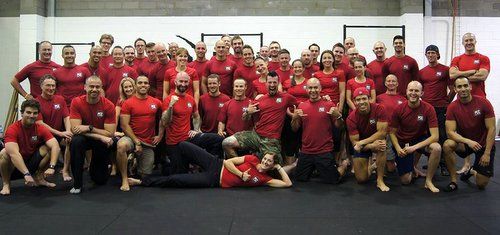
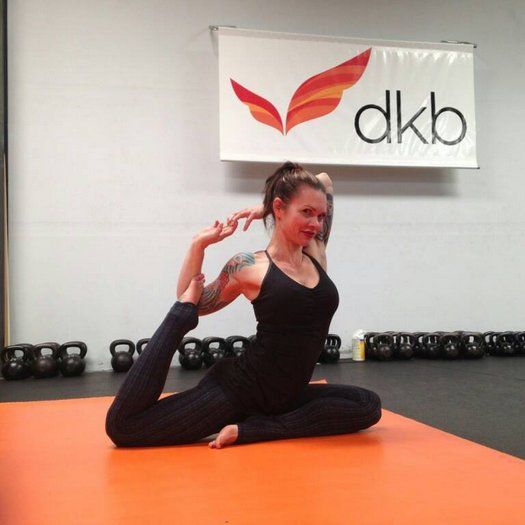
 Next is a standing forward bend, where you bring your hands to one side and keep them on the ground as you stand up. This is a combined forward bend and rotation. Another variant is to sit back into the opposite hip. So if your hands are to the right of your body, you’ll sit back to the left. Spend a couple minutes going between one side and the other.
Next is a standing forward bend, where you bring your hands to one side and keep them on the ground as you stand up. This is a combined forward bend and rotation. Another variant is to sit back into the opposite hip. So if your hands are to the right of your body, you’ll sit back to the left. Spend a couple minutes going between one side and the other. For a proper bridge, your arms and legs are the support structures and your hips and back should be relaxed and open. Your chest should be projected up and back, toward the top corner of the wall behind you, and your hips should be lifted up and forward, toward the top corner of the wall in front of you. This aiming in opposite directions creates that “openness” in the spine. Breathing should be steady and even, and you should hold the position for 5 to 10 breaths. Again, don’t force things. Take your time and improve steadily.
For a proper bridge, your arms and legs are the support structures and your hips and back should be relaxed and open. Your chest should be projected up and back, toward the top corner of the wall behind you, and your hips should be lifted up and forward, toward the top corner of the wall in front of you. This aiming in opposite directions creates that “openness” in the spine. Breathing should be steady and even, and you should hold the position for 5 to 10 breaths. Again, don’t force things. Take your time and improve steadily.
